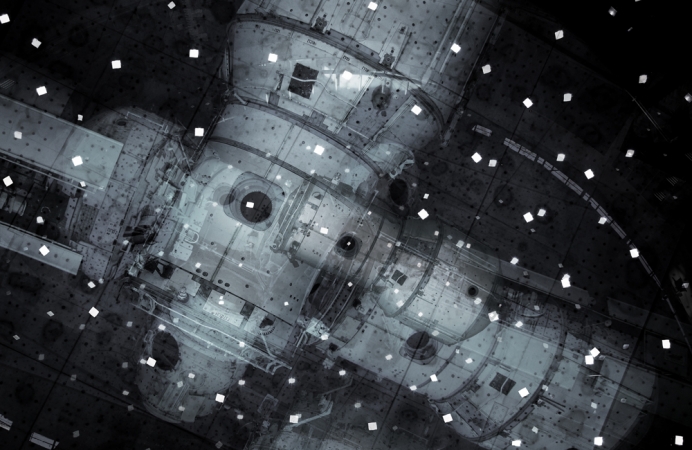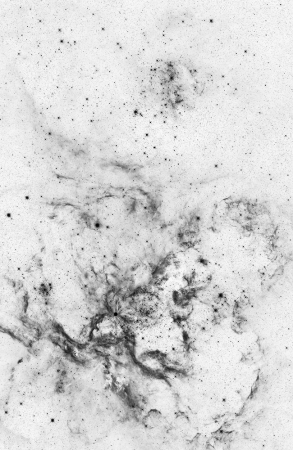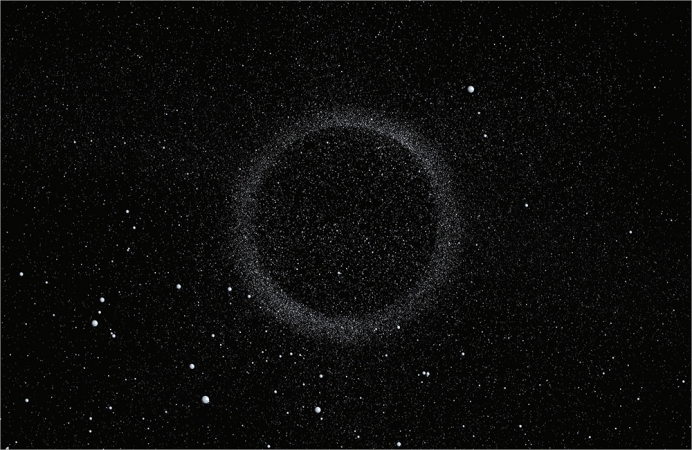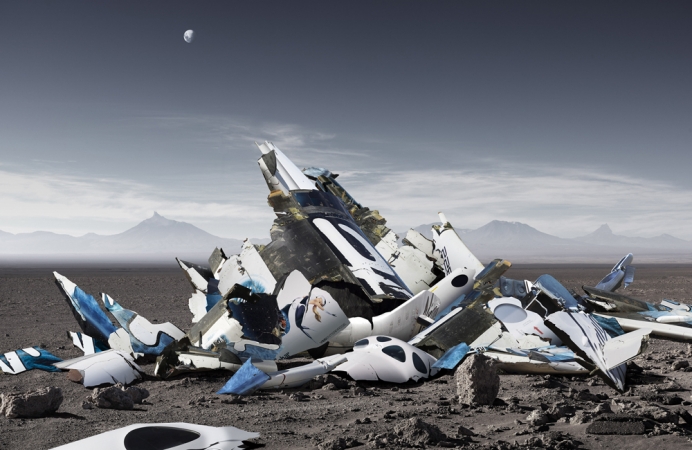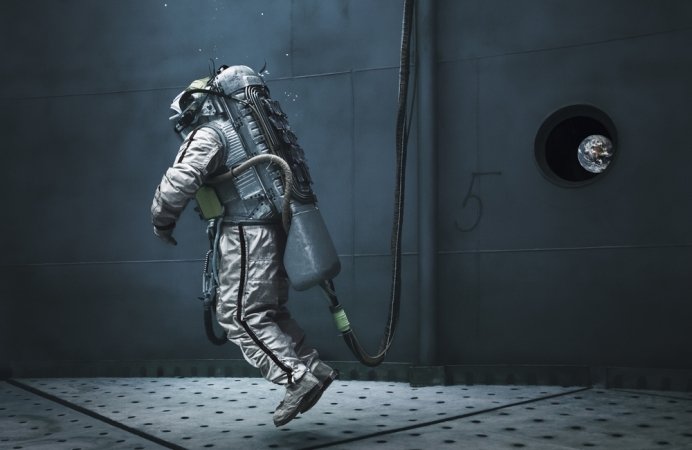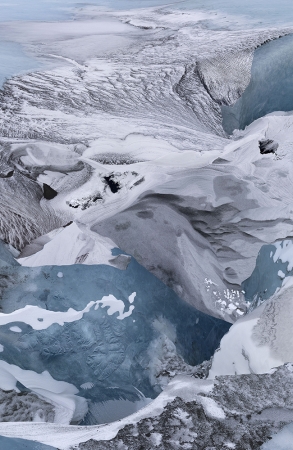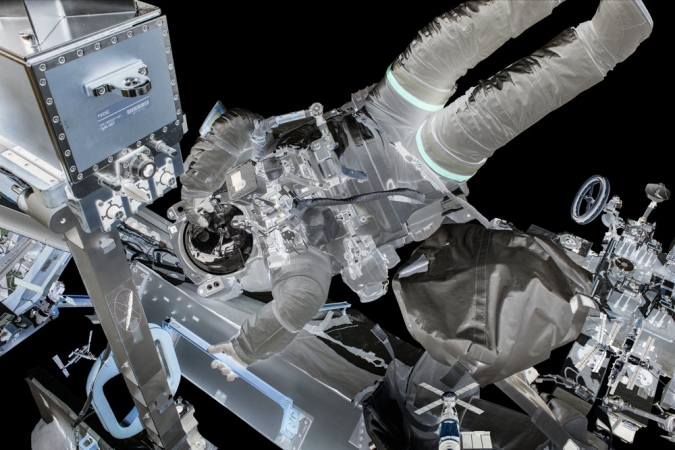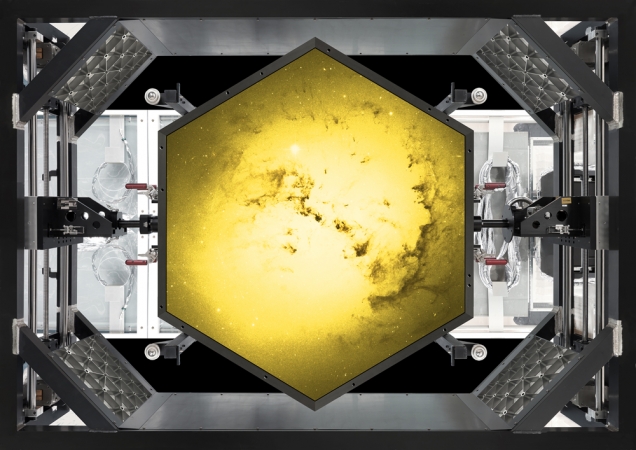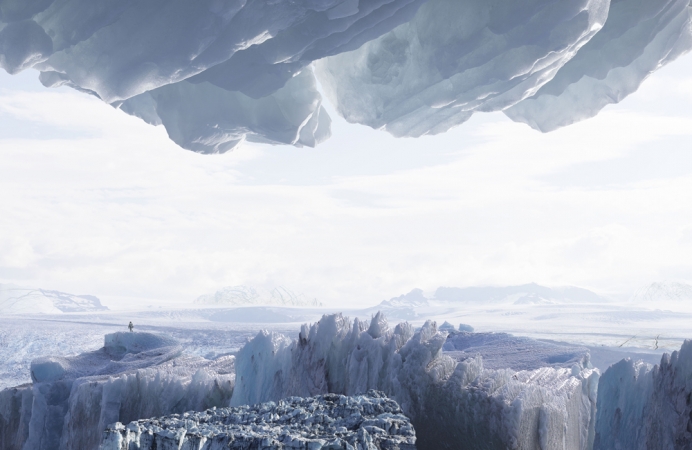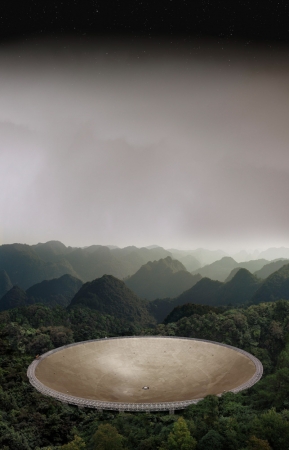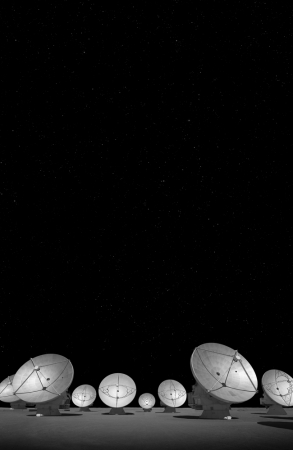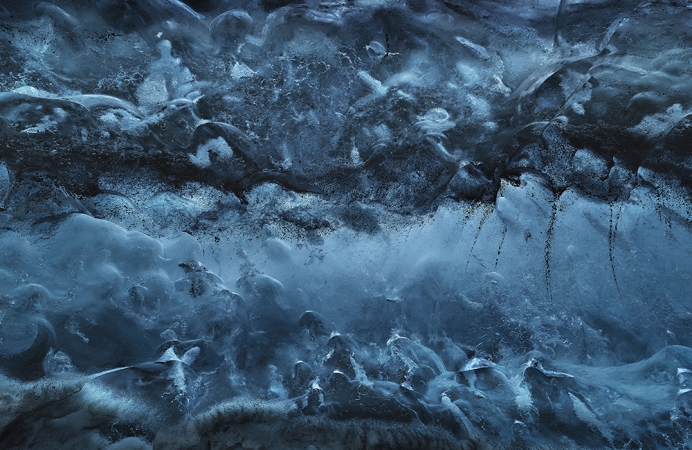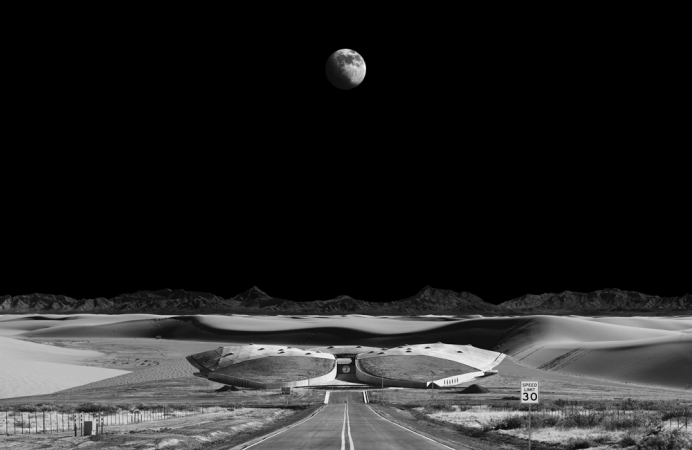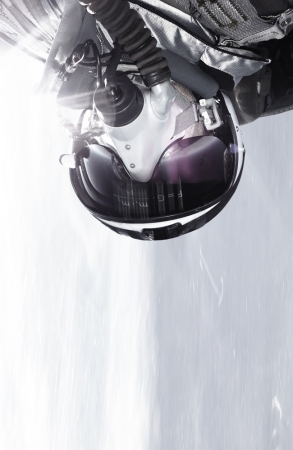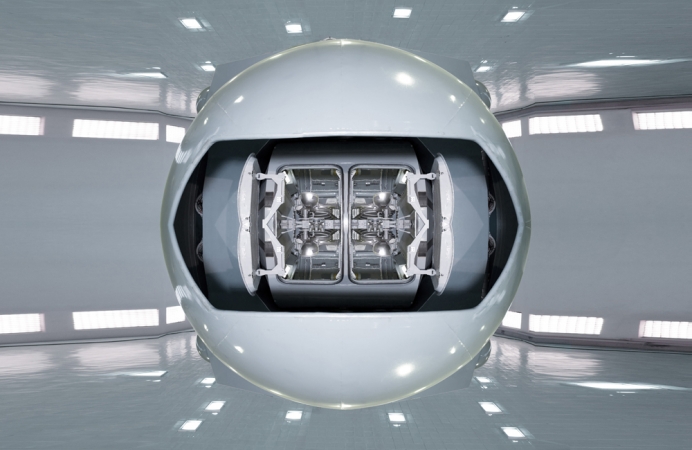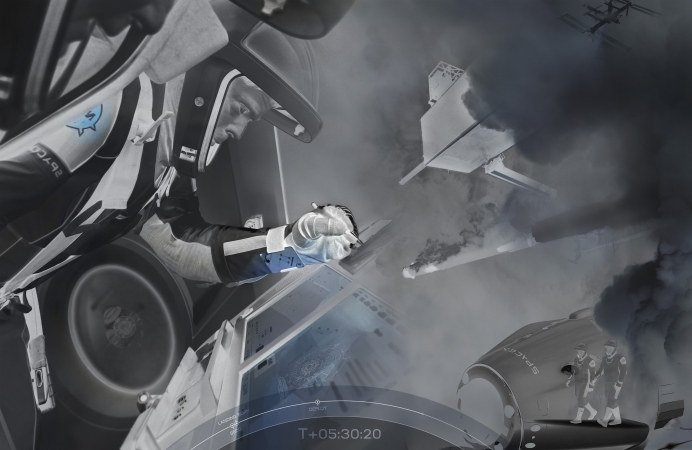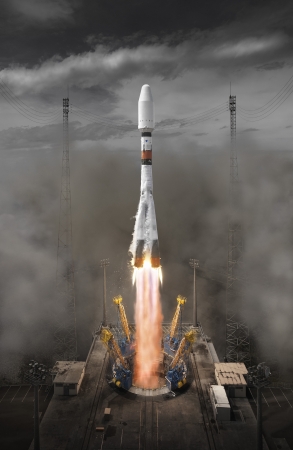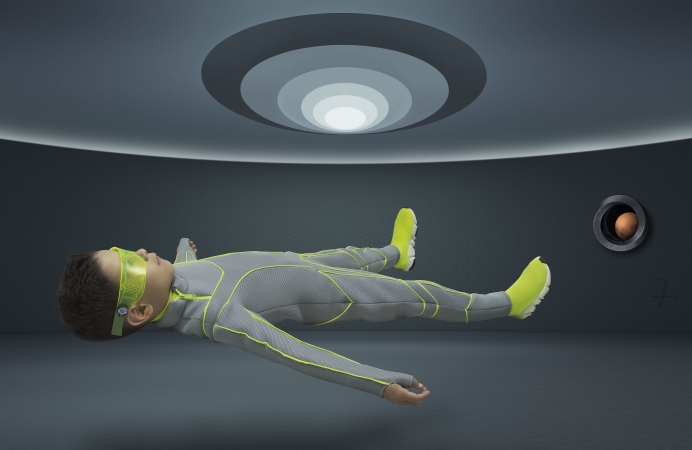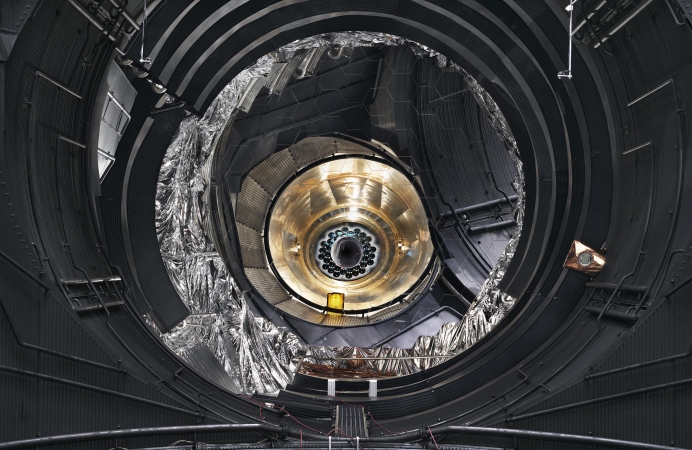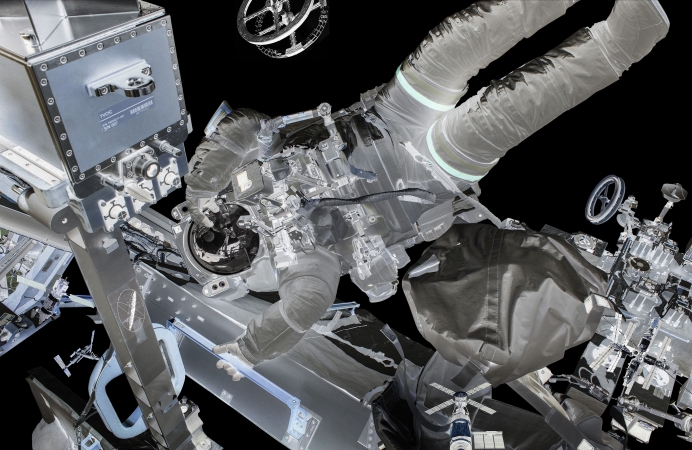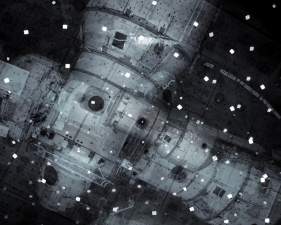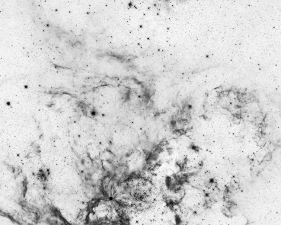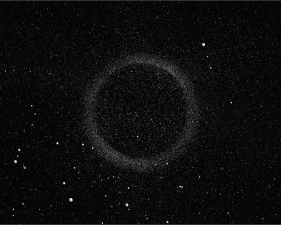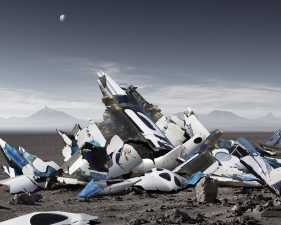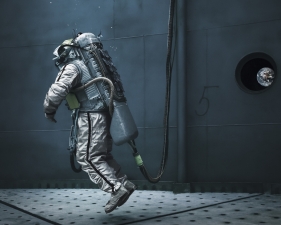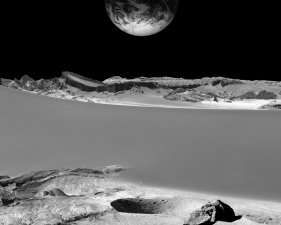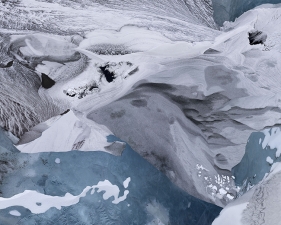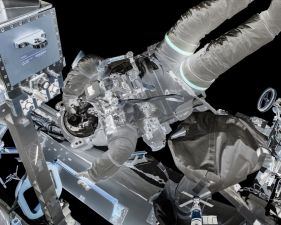OUTER SPACE
Central to outer space is Najjar’s personal experience with space flight and the performative aspect of the exhibited images. As one of the pioneer astronauts of Richard Branson’s Virgin Galactic, Najjar has been undergoing an intensive, multistage cosmonaut training in Star City, Russia, since 2012, and is scheduled to board SpaceShipTwo in the near future. The artist uses the actual experience of training (zero-g flight, centrifuge training, stratosphere flight, and underwater space walks, to name a few) to create complex and never-before carried out photos that examine vital connections between humans and technology. Reality and simulation are so intertwined that they become indistinguishable, allowing for novel ways of seeing. Video artworks based on Najjar’s extreme training will be shown as part of the exhibition.
The acceleration in aeronautic research and industry and the birth of commercial space travel has brought humanity on the verge of a new era. The images of outer space – the ultra-high resolution telescope “golden eye II,” the world’s largest centrifuge, the first private spaceport, mineral mining on the moon, or space debris orbiting around the earth at fast speed – all address these technological advancements, attempting to elucidate their important cultural implication through artistic transformation. “By leaving our home planet and flying to the moon or other planets, we change our understanding of who we are and where we come from,” Najjar says. “The point is to reflect on our world and what it means to us and the generations to come after us. It’s about the very origins of the self.”
Najjar’s work constantly interrogates the relationship between reality and representation in the technical image. In his conceptual approach he magnifies the potential of the image through constant reconstruction of time and space for which he deploys a broad array of image processing techniques. Najjar’s pictorial language of form and content guides the viewer into a complex construction of simulated reality which is generated by the montage of multiple image sources and elements. He removes the photographic image from its historical viewing conventions and resituates it in a fundamentally new mode of perception.
Najjar’s work is grouped in thematic work series. The variety of themes covered ranges from transformation of global megacities through compaction of information networks (“netropolis” 2003-2006), depictions of the human body transformed by biogenetic intervention (“bionic angel” 2006-2008) and virtualization of financial markets with smart algorithms (“high altitude” 2008-2010) to the future of the human species through space exploration (“outer space” since 2011). The performative aspect of his artistic practice has shifted into sharper focus since the start of his “outer space” series, in his earlier series the artist climbed to the tops of skyscrapers, and scaled one of the highest mountains in the world in an expedition lasting several weeks; for his current series he will soon be flying into space on board a futuristic spaceship. Once more, the artist will be exposing himself to extreme experiences and testing his mental and physical limits in highly complex technical environments. Such borderline experience informs his unique photo and video artworks. Najjar uses his own body as a performance medium – the artist as space (ad)venturer.
Najjar´s work has been included in many international museum exhibitions and biennials. Harald Szeemann exhibited his work in 2004 in ”The Beauty of Failure / The Failure of Beauty“ at the Joan Miró Foundation in Barcelona. His work formed part of the 2006 Venice Biennale's 10th International Architecture Exhibition, the 9th Havana Biennale 2006 and Convergence Biennale Beijing 2007. In 2008, a large-scale, comprehensive survey was presented at the Museum for Contemporary Art GEM in The Hague. In 2011 he participated in the milestone exhibition “Atlas – How to carry the world on one´s back“, shown at the Museo Reina Sofía, ZKM Museum for Contemporary Art and Deichtorhallen / Phönixhallen Hamburg. In 2015 he was a selected artist at the ZKM | Globale where work from his current “outer space” series was shown in the groundbreaking exhibition “Exo-Evolution” curated by Peter Weibel. In 2017 he participated at the 7thth International Moscow Biennale curated
by Yuko Hasegawa. Najjar has also exhibited at the following national and international museums, institutions and galleries: Academy of Arts, Berlin; Museum Ludwig, Cologne; Kunsthalle Hamburg / Galerie der Gegenwart, Hamburg; Deichtorhallen - International Museum of Photography, Hamburg; Marta Museum, Herford; Edith Russ Site for Media Art Oldenburg; Museum of Art, Tucson; Science Museum, London; Museum of Contemporary Art, Birmingham; New Media Art Institute, Amsterdam; FORMA International Centre for Photography, Milan; Centre pour l´image contemporaine, Geneva; Museo DA2 (Domus Artium 2002), Salamanca; Centro de Arte Contemporaneo, Málaga; Museo Es Baluard, Palma de Mallorca; National Museum of Science, Taipeh; Central Academy of Fine Arts, Beijing, Tretjakow Gallery, Moscow. Work by Michael Najjar forms part of museum, corporate and private collections across the world. His work is featured in a wide range of international publications.




